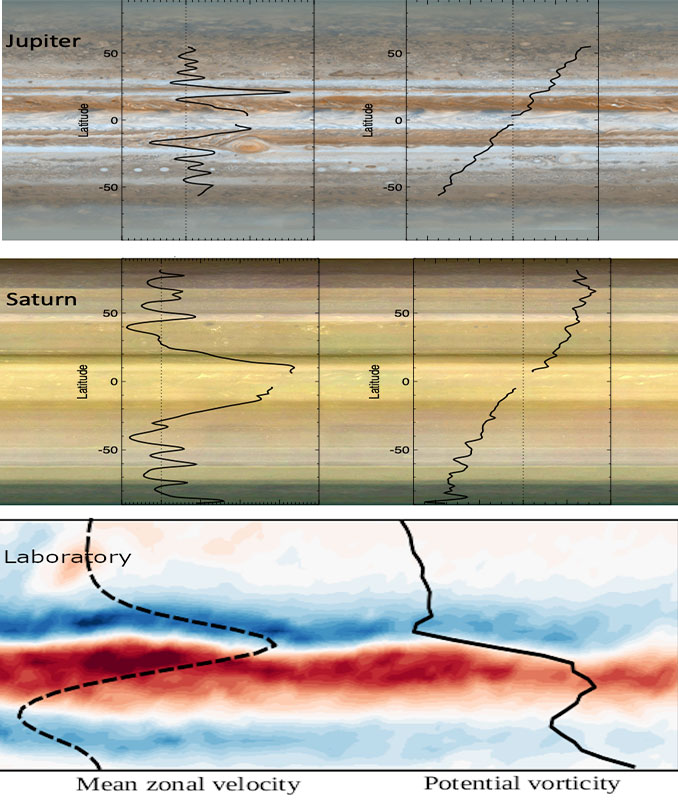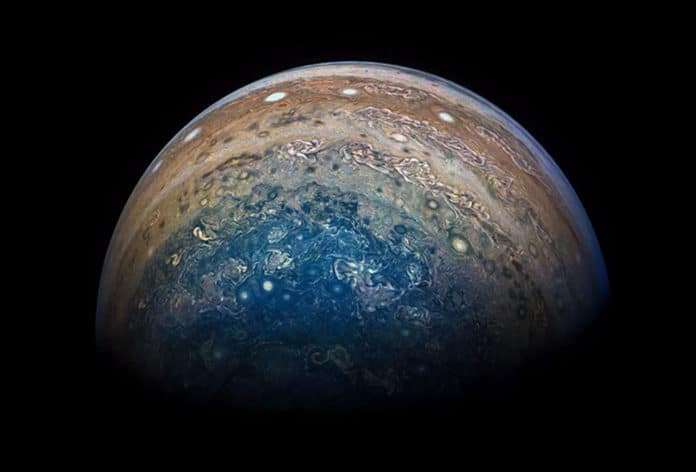Two gas giants Jupiter and Saturn, are rough and turbulent places. Their turbulence produces energy cascades, a non-linear transfer of energy between different scales of motion.
These are as fundamental to understanding planetary dynamics as the cardiovascular system is to understand the human body.
But, there is no reliable way to quantify planetary turbulence—until now.
Now, scientists from the University of Rome have shown that the turbulence energy transfer rate can be calculated relatively quickly from a variable related to the planetary rotation and known as potential vorticity (PV).
The method was first developed by Galperin and his graduate student, Jesse Hoemann, and tested in the experiments conducted at the University of Rome during Jesse’s visit. The method was confirmed using real velocity data extracted from images of Jupiter‘s clouds movement captured by the 20-year-long Cassini mission, additional laboratory results performed in a rotating tank at the University of Rome in Italy, and computer simulations for Saturn.

Based on the calculations of PV, the team showed for the first time that the rate of the energy transfer in Jupiter’s atmosphere is four times greater than that in Saturn’s.
Like fundamental physical laws, the turbulence laws are universal; hence the method can now be applied to other natural environments such as the ocean.
Galperin said, “Eddies in Earth’s ocean that look like the swirls on Jupiter, for example, come in different strengths, sizes, and lifetimes, and are critical to understanding Earth’s balances of energy, heat, salt, carbon dioxide, and more.”
Lead author Simon Cabanes, Ph.D., a post-doc at the Department of Civil and Environmental Engineering (DICEA) of the University of Rome La Sapienza said, “This is the first estimate of Saturn’s turbulent power from observations, and this study paves the way for future data analysis in other planetary atmospheres.”
Journal Reference:
- Simon Cabanes et al. Revealing the intensity of turbulent energy transfer in planetary atmospheres, Geophysical Research Letters (2020). DOI: 10.1029/2020GL088685
